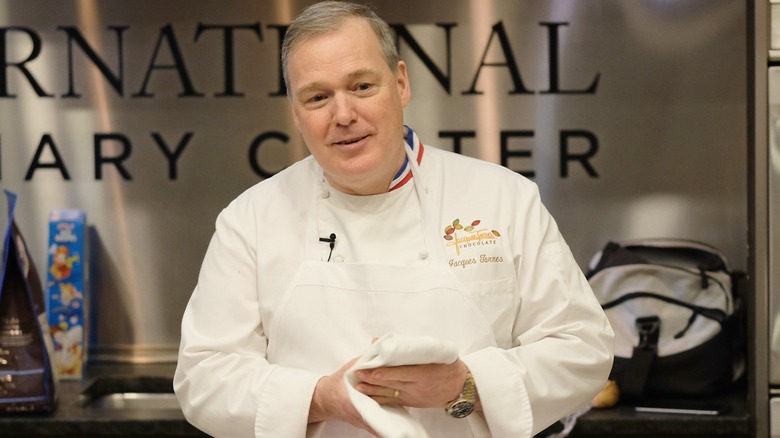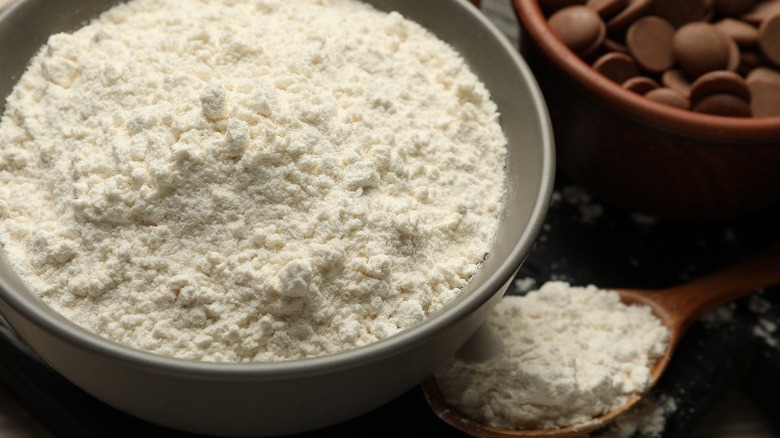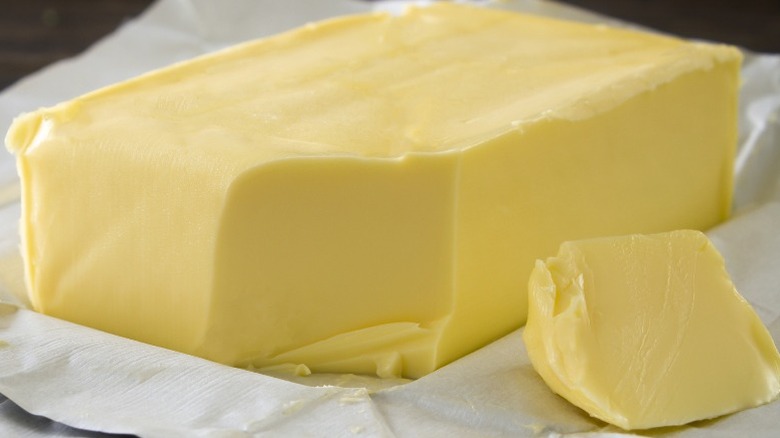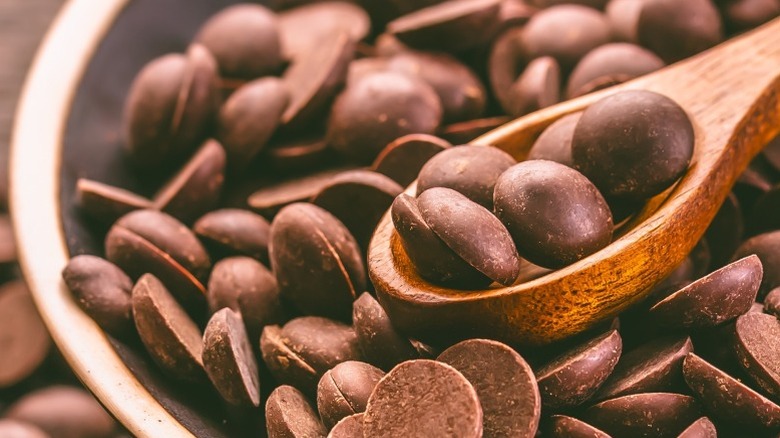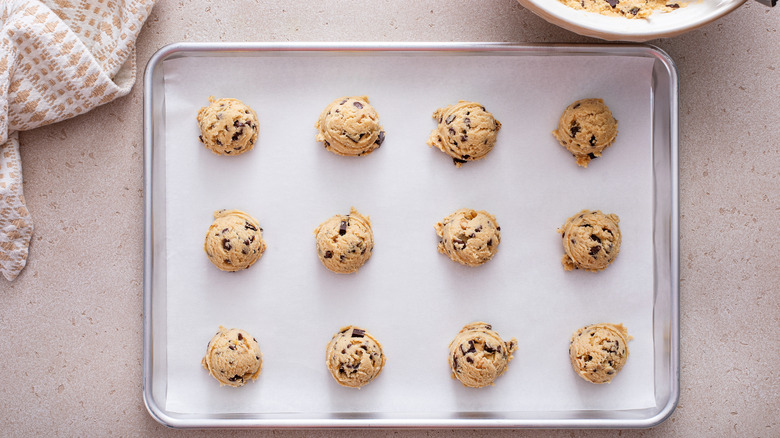Use Chef Jacques Torres' Tip For Better Chocolate Chip Cookies
We may receive a commission on purchases made from links.
They call him Mr. Chocolate, and for a pretty obvious reason. The master chocolatier has made a career of creating delicious confections and is an influential figure in the bean-to-bar movement, which advocates for small-batch chocolate-making that focuses on quality cacao bean sourcing. But Torres' work doesn't stop at the source; he makes a mean chocolate chip cookie as well.
His chocolate chip cookie recipe has garnered a well-deserved cult following. The cookie is both chewy and soft, with layers of thin dark chocolate discs that play off a rich brown sugar base. But Torres' recipe isn't your run-of-the-mill fare.
Many of the best chocolate chip cookie recipes call for plain old all-purpose flour. But Torres calls for both cake flour and bread flour in almost equal measure. And that one change impacts the rest of of Torres' tips for chewy chocolate chip cookies, so it's imperative to understand the purpose of each suggestion.
Different flours to control the texture
Let's talk about flour's power in baking: its protein content. The more protein in your recipe, the more structurally sound the resulting baked good will be. Bread flour, which is high in protein at 12% to 14%, produces a chewier result, while cake flour, which is low in protein at 7% to 9%, yields something softer and fluffier.
You could definitely just use all-purpose flour (9% to 11% protein), but combining cake and bread flour lets you make a cookie with the perfect protein content, helping you balance softness and chew. If your first batch is too chewy or dry, adding more cake flour next time brings tenderness and provides better absorption for both fat- and water-based liquid ingredients. Cake flour can also help to better spread fat-based ingredients throughout your dough. Meanwhile, the high protein content of the bread flour can add chewiness if that's what you feel is lacking.
Cake flour absorbs higher-fat butter for better texture
Thanks to cake flour's efficient fat absorbency, you can bind your cookies with a base of high-fat-content butter to produce a richer, more flavorful cookie dough. This European-style butter is actually only about 2% fattier, but that extra fat makes a massive difference. It's richer, creamier, and more luscious. It also may be lightly fermented, aka cultured, giving it depth and a satisfying zing.
Kerrygold Irish butter is a popular choice in the U.S. and is available in grocery stores nationwide or on Amazon. But you can also find American-made European-style butters. For example, Vermont Creamery's unsalted cultured butter is also available on Amazon.
It's more expensive than standard American butter, but it's worth it. The rich, flavorful fat serves as the perfect base for those delicious, melty chocolate bits at the heart of any chocolate chip cookie.
Bread flour provides structure the chocolate chips can't
Torres calls for thin, high-quality chocolate discs with 60% cacao content, similar to the Belcolade Belgian dark chocolate wafers or Jacques Pepin 60% cacao discs available on Amazon. When baked, the discs form layers of chocolate that accent your cookie's rippling, chewy texture perfectly.
But that chewy texture isn't the only reason to use bread flour. Since the discs lack the stabilizers you find in high-quality chocolate chips, the higher protein content (and Torres' direction to tuck stray chips into the dough) helps keep the cookie dough stable. And you need those chips thanks to the deliciously rich butter. It gives the cookies a bite of pure chocolate flavor without being overpoweringly bitter.
Both flours hydrate for intense flavor
Chilling cookie dough isn't exactly new advice. Many bakers swear by letting cookie dough rest in the fridge for at least an hour before baking. But Torres specifically recommends chilling the dough for about 36 hours, up to 72, in the fridge to produce a better cookie.
Chilling the dough for around 24 hours allows the flour to hydrate and ripen, fully absorbing both the moisture and flavor of the wet ingredients. The sugar also absorbs liquid, and the longer it goes, the less free moisture is available in your cookies. Ultimately, the overall dryer dough yields a more intense flavor and allows for better browning that only gets better once you sprinkle them with sea salt for the perfect flourish.
